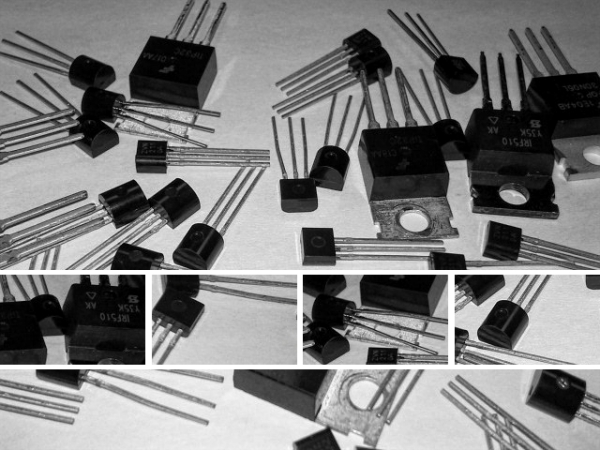I wonder how many people truly realize how critically important the transistor has become in this modern world to which we have become so accustomed. Transistors are in nearly everything electronic, from computers to watches, phones (both smart and dumb), radios, TVs, toys, games… the list goes on and on.

So what are transistors, what do they do, and how can I use them?
Simply put, transistors are switches. Sort of. They are electronic switches that can use a small input signal (as either voltage or current) to make a connection, allowing a much larger signal to do some work. Small devices like microcontrollers have a hard time providing enough power to make even small motors turn. But that same signal from the microcontroller can turn on a MOSFET (metal oxide semiconductor field-effect transistor) and drive high current devices, like the motors used in electric go-karts and such. BJTs (bipolar junction transistors) can amplify small input signals by such a large factor that we can hear the faint footfalls of ants, as if “Honey, I Shrunk The Kids” was a documentary.
This is only the beginning. For a more in depth explanation and some simple starter projects, head on over to Instructables, where I have posted two transistor basics projects, one for BJTs and another for MOSFETs.


3 Comments on “Transistor Basics: Quick Guide”